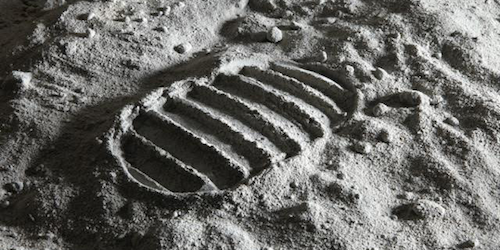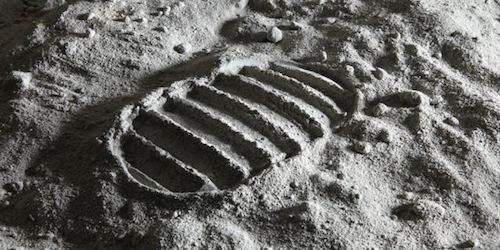Supernova Footprint on the Moon
About 2 million years ago, a star next door to our solar system may have gone boom. The fallout from such an explosion would explain abnormal levels of a radioactive iron isotope found in deep-sea samples. This nearby-supernova hypothesis—first proposed in 1999—is now supported by new evidence from the Moon. Researchers studying lunar soil samples have uncovered high levels of that are consistent with Earth data. The “pristine” lunar record provides a more accurate estimate of the total amount of debris from nearby supernovae.
A primary interest in nearby supernovae stems from their possible connection with extinctions on Earth. Besides emitting deadly radiation, these events also spew out heavy elements, such as , which can settle on planetary bodies within the blast zone. Detecting high levels of in a geological sample implies a fairly recent (and close) supernova, since this isotope has a radioactive half-life of 2.6 million years.
Although high concentrations were originally found in 2-million-year-old oceanic crust, a better “archive” of the solar system’s past is the unworked surface of the Moon. Gunther Korschinek from the Technical University of Munich, Germany, and his colleagues obtained lunar soil samples from the Apollo missions. Using accelerator mass spectrometry, they found the ratio of to total iron was around 1 part in , which is about 10 times higher than the measured background. Cosmic-ray interactions—another possible source of —could not account for this high concentration. The team estimated the time-integrated flux of , which is a valuable constraint on models of our local stellar environment.
This research is published in Physical Review Letters.
–Michael Schirber





